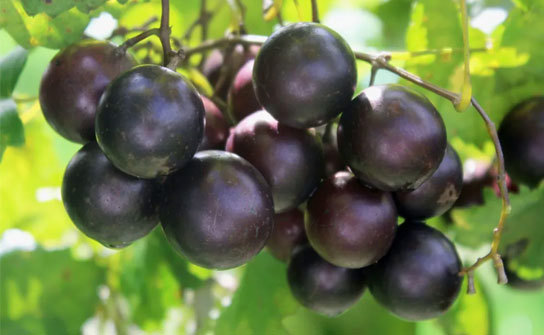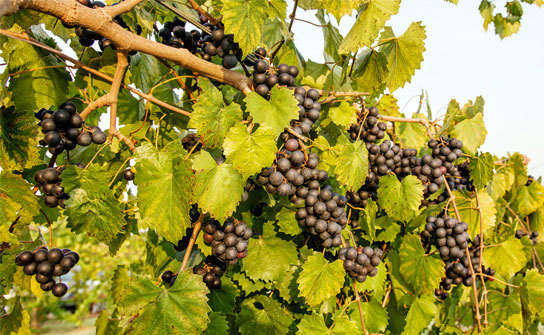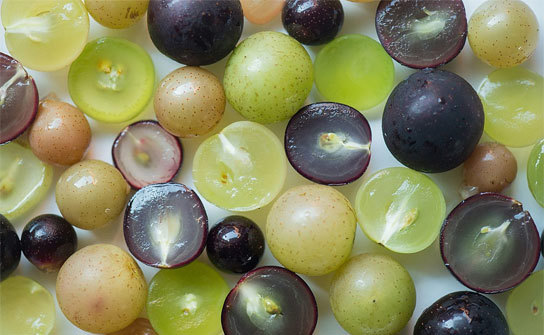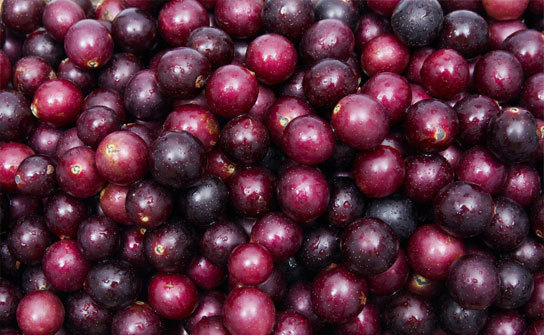 September-23-2023
September-23-2023
View: 0

Muscadines can be enjoyed fresh, used in preserves and jams, or even turned into delicious wine.
Planting Muscadine Grapes: A Guide to Growing Your Own Southern Delight
Muscadine grapes, with their sweet and uniquely flavored fruit, have been a beloved staple in the Southern United States for centuries. These hardy vines not only produce delectable grapes but also add a touch of rustic charm to your garden or vineyard. Whether you're a seasoned gardener or a novice looking to try your hand at grape cultivation, this guide will walk you through the steps to successfully plant and grow muscadine grapes.
Choosing the Right Time and Location
The first step in planting muscadine grapes is selecting the optimal time and location. Muscadines thrive in the warm and humid climate of the South and are best planted between November and February. This period provides the vines with the dormancy they need to establish strong roots before the growing season begins.

When choosing a location for your muscadine vine, keep the following factors in mind:
1. Sunlight: Muscadines are sun lovers and require at least 6-8 hours of direct sunlight daily. Select a spot in your garden that receives ample sunshine throughout the day.
2. Soil: Muscadine grapes are adaptable and can grow in various soil types, but they thrive in well-draining soil. Avoid areas where water tends to accumulate after heavy rainfall, as excessively wet soil can lead to root rot.
3. Trellis: Muscadine vines are vigorous climbers and need support to grow effectively. Install a sturdy trellis system before planting your vines to provide them with the necessary structure for growth.
Preparing the Soil
Once you've chosen the perfect spot for your muscadine vine, it's time to prepare the soil. Follow these steps to ensure your vines have a healthy foundation:
1. Soil Test: Conduct a soil test to determine its pH and nutrient levels. Muscadines prefer slightly acidic soil with a pH between 5.5 and 6.5. If necessary, amend the soil with lime to adjust the pH.
2. Digging the Hole: When planting bare-root muscadine vines, dig a hole that is approximately twice as deep and wide as the root system. This ensures enough space for the roots to spread and establish themselves.
3. Fertilization: Mix organic matter, such as compost or well-rotted manure, into the soil to improve its fertility. Avoid using high-nitrogen fertilizers, as they can promote excessive vegetative growth at the expense of fruit production.

Planting Muscadine Vines
Now that your soil is ready, it's time to plant your muscadine vines. Follow these steps for a successful planting:
1. Bare-Root Vines: Muscadine vines are often sold as bare-root plants. Before planting, soak the roots in water for a few hours to rehydrate them.
2. Positioning the Vine: Place the bare-root vine in the center of the hole, spreading out its roots. Ensure that the crown of the plant is at ground level or slightly above, as planting too deeply can lead to root rot.
3. Backfilling: Fill the hole with soil, gently tamping it down as you go to eliminate air pockets. Water the newly planted vine thoroughly to settle the soil around the roots.
Trellising and Pruning
Proper trellising and pruning are crucial for the healthy growth and fruit production of muscadine grapes. Here's what you need to know:
1. Trellising: Muscadine vines require a trellis system to support their vigorous growth. Install a trellis with sturdy posts and horizontal wires to provide the vines with support as they grow.
2. Pruning: Pruning is essential to encourage fruit production and maintain the health of the vine. Prune muscadines during late winter or early spring before new growth begins. Remove dead or diseased branches, as well as any excess growth that may hinder airflow and sunlight penetration.
3. Training: Train the main vine along the trellis wires, and as lateral shoots develop, select the strongest ones to train as well. Muscadines produce fruit on new growth from the previous year, so maintaining a balanced canopy of leaves and shoots is essential for a bountiful harvest.

Watering and Maintenance
Consistent moisture is vital for muscadine grape vines, especially during the growing season. Keep these maintenance tips in mind:
1. Watering: Muscadines prefer consistently moist soil, especially during dry spells. Water deeply, allowing the soil to dry slightly between waterings to prevent root rot.
2. Mulching: Apply a layer of mulch around the base of the vine to retain soil moisture and suppress weeds. Organic mulch, such as straw or wood chips, works well.
3. Pest and Disease Management: Keep an eye out for common pests like aphids, Japanese beetles, and fungal diseases such as downy mildew. Regularly inspect your vines and take appropriate measures to control pests and diseases.
Harvesting Muscadine Grapes
With proper care, your muscadine grape vines will reward you with a bountiful harvest. Muscadines typically ripen in late summer to early fall, depending on the variety and local climate. When the grapes are fully ripe, they should easily come off the vine when gently pulled.
Muscadines can be enjoyed fresh, used in preserves and jams, or even turned into delicious wine. Harvest them at their peak of ripeness for the sweetest and most flavorful grapes.
In conclusion, planting and growing muscadine grapes can be a rewarding endeavor for any gardener, whether you're a seasoned pro or a beginner. With the right timing, location, and care, you can enjoy the sweet and unique flavor of muscadine grapes right from your own backyard. So, roll up your sleeves, prepare your trellis, and get ready to savor the taste of the South with your homegrown muscadine grapes.
#Muscadines #MuscadinesGrapes #Grapes